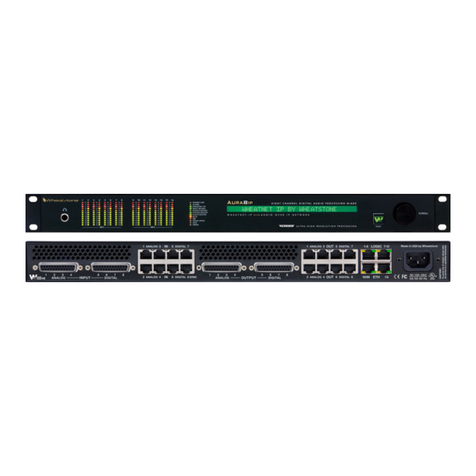
page Contents – 3
AM-10HD / Aug 2008
CONTENTS
Bargraph Metering................................................................................................3-17
Input Levels / Gain Reduction Meter ................................................................3-18
Output Meter.....................................................................................................3-18
60dB Range......................................................................................................3-18
Display Signal Selection.......................................................................................3-18
Input..................................................................................................................3-18
PreDelay...........................................................................................................3-18
Audio ................................................................................................................3-19
Gain Reduction.................................................................................................3-19
Controls ............................................................................................................3-19
L/R (Left/Right) .................................................................................................3-19
O-Scope ...........................................................................................................3-19
Control Area Region..................................................................................................3-20
Input Menu............................................................................................................3-21
Input Settings....................................................................................................3-21
Input Source .....................................................................................................3-21
Input Signal Presence ......................................................................................3-21
Input Failsafe....................................................................................................3-21
Analog Gain......................................................................................................3-22
AES Gain..........................................................................................................3-22
Balance.............................................................................................................3-22
Phase Rotator...................................................................................................3-22
HPF - High Pass Filter......................................................................................3-23
Why the Sum and Difference High Pass Filter Option?.................................3-23
Parametric Equalizer Menu ..................................................................................3-24
Enable ..............................................................................................................3-25
Automatic Gain Control and Compressor Menu...................................................3-26
Drive ................................................................................................................3-26
Makeup............................................................................................................3-26
AGC/Comp Buttons.........................................................................................3-27
Gated Modes...................................................................................................3-28
Ooze...........................................................................................................3-28
Hold ............................................................................................................3-28
Gate Delay.......................................................................................................3-28
Gate Threshold................................................................................................3-29
Band Coupling.................................................................................................3-29
AGC Backoff....................................................................................................3-30
Crossover Frequencies ...................................................................................3-31
Selecting Crossover Frequencies...............................................................3-31
AGC/Compressor Gain Reduction ..................................................................3-32
HD Output Menu....................................................................................................3-33
Source ..............................................................................................................3-33
Bandwidth.........................................................................................................3-33
HF Protect and HyperMono..............................................................................3-33
HF Protect ..................................................................................................3-34
Ceiling.........................................................................................................3-34
Recovery ....................................................................................................3-34
HyperMono.................................................................................................3-34
Lim/Clip (Limiter/Clipper) Drive ........................................................................3-35
Limiter Enable...................................................................................................3-36
L/R Linked ........................................................................................................3-36
Limiter Thresh...................................................................................................3-36
Attack................................................................................................................3-36





























